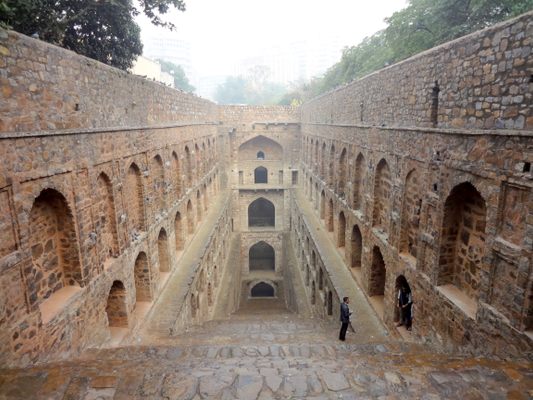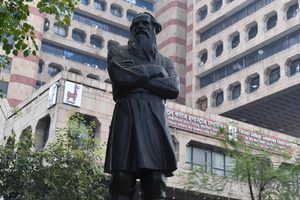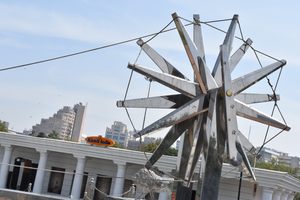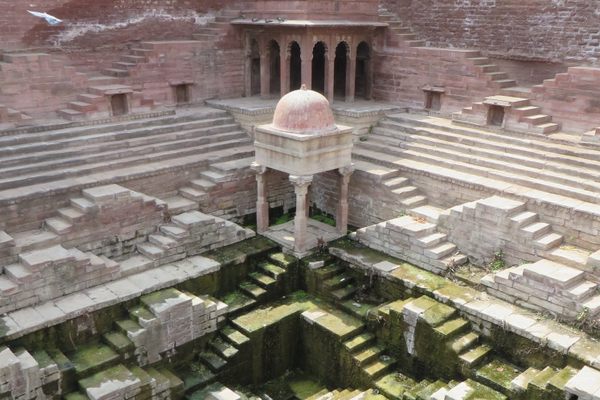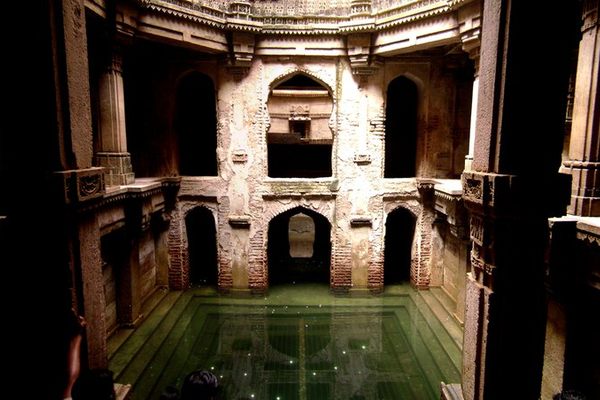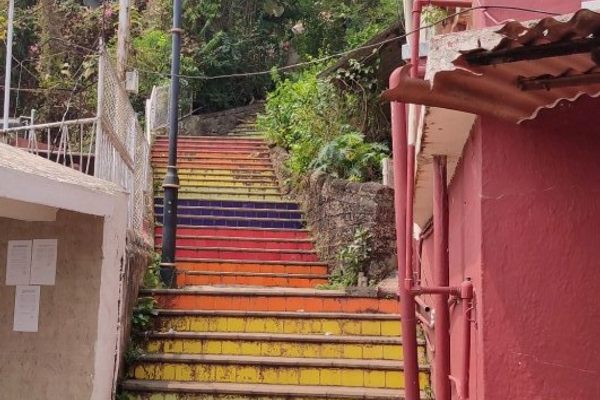About
New Delhi’s Connaught Place is one of the city’s most raucous commercial areas, teeming with locals and tourists alike. Yet just a short walk away down a peaceful residential street, a centuries-old, subterranean marvel hides behind a mundane stone wall in the shadow of modern high-rises.
Agrasen ki baoli is a stepwell, otherwise known as “baoli” or “vav”, depending on the region. Thousands of these sophisticated water-harvesting structures proliferated throughout India beginning around 600 CE, but they fell into disuse with the advent of water pumps and plumbing. Flights of steps were excavated adjacent to deep well shafts, ensuring that dramatically-fluctuating ground water could be reached all year long.
Today, most stepwells are abandoned and terribly dilapidated, although a relative handful have been restored by the government, as is Agrasen ki baoli. There are still hundreds—perhaps thousands—of these little known subterranean edifices found all over India, whether in remote districts, in small villages, or enormous cities like Delhi, which once boasted a hundred.
It’s impossible to describe the experience of walking through an unassuming gateway and being greeted by a vertiginous plunge. Standing at ground level, there are steps cascading four levels into the earth, excavated by hand hundreds of years before the Machine Age. Arched corridors line either side, and at the far end, a stack of dark, faintly ominous openings leads directly into a dry well shaft. This is more than merely a startling view, it’s downright disorienting: We’re used to looking up at architecture, not down into it, which adds to the breathtaking power, not just of Agrasen ki Baoli, but nearly every stepwell.
Little factual information about stepwells exists, or is just wildly conflicting, which makes determining construction dates impossible. Such is the case with Agrasen ki baoli, named for a legendary king said to have lived 5,000 years ago, but whose existence has never been proven. The existing structure was probably built in the late 14th century or early 15th century but was restored more recently.
One thing is certain: Whatever the stepwell’s origin, it was located far outside the old city of Delhi and would have been a welcome oasis for travelers seeking shelter. The niched corridors running along both sides offered cool retreat with water just a few feet away, so holing up for hours or days would have been inviting.
On the other hand, Agrasen ki baoli is considered one of the most haunted places in town, thanks to tales of curses, demons, suicides, and ghosts that often surround stepwells. The deep shadows, dark water, and echo of flapping pigeons can guarantee a creepy atmosphere, but that can change. These days the stepwell is thronged with fans of the 2014 hit movie, PK, in which Bollywood superstar Aamir Khan played an alien. His home? Agrasen ki baoli.
Victoria Lautman is an arts and culture journalist with a focus on India. Her book, The Vanishing Stepwells of India, was published in 2017 by Merrell (London). Follow her @victorialautman.
Related Tags
Delhi and Rajasthan: Colors of India
Discover Colorful Rajasthan: From Delhi to Jaipur and Beyond.
Book NowCommunity Contributors
Added By
Published
March 26, 2018
